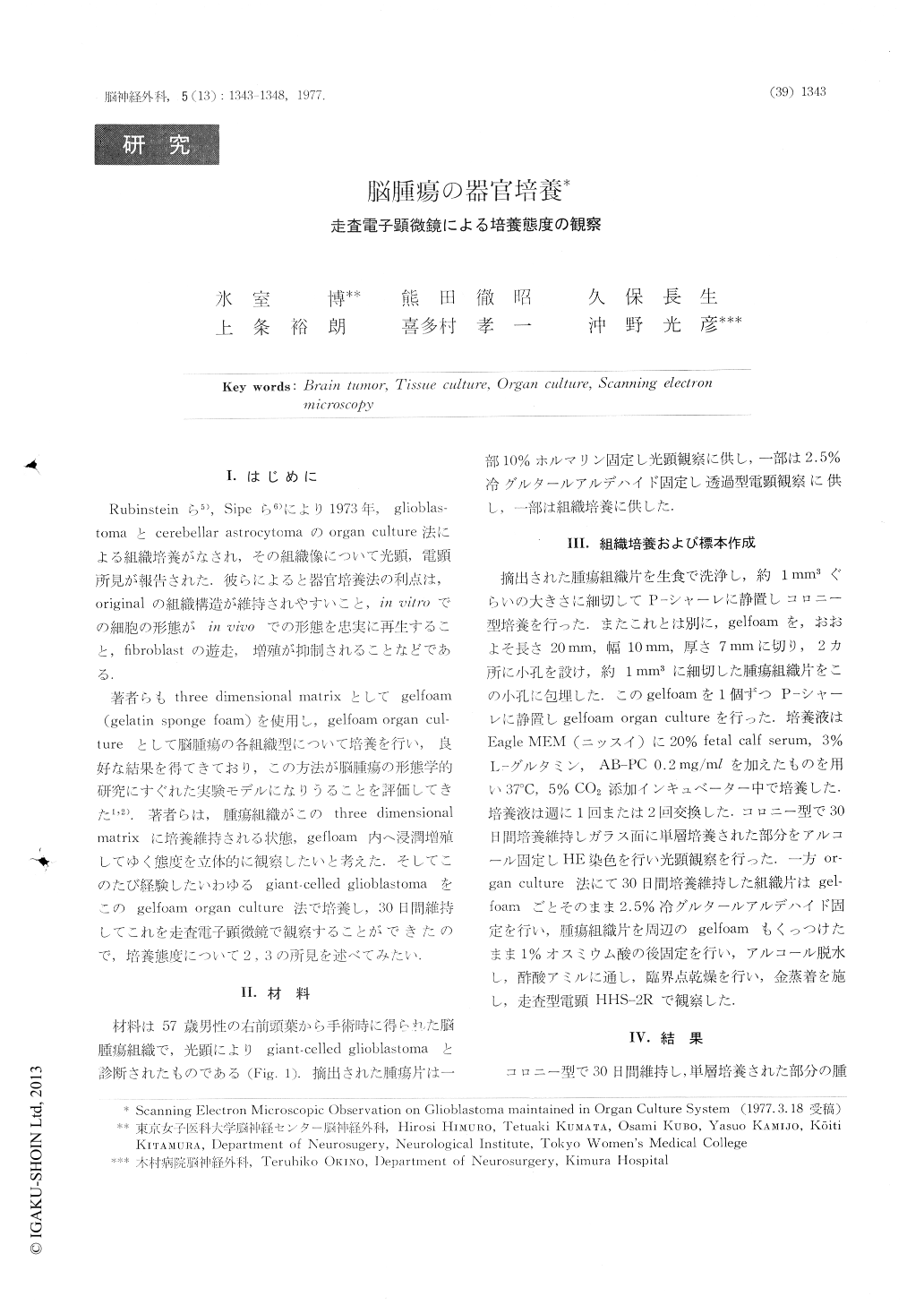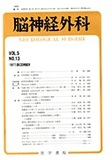Japanese
English
- 有料閲覧
- Abstract 文献概要
- 1ページ目 Look Inside
Ⅰ.はじめに
Rubinsteinら5),Sipeら6)により1973年,glioblastomaとcerebellar astrocytomaのorgan culture法による組織培養がなされ,その組織像について光顕,電顕所見が報告された.彼らによると器官培養法の利点は,originalの組織構造が維持されやすいこと,in vitroでの細胞の形態がin vivoでの形態を忠実に再生すること,fibroblastの遊走,増殖が抑制されることなどである.
著者らもthree dimensional matrixとしてgelfoam(gelatin sponge foam)を使用し,gelfoam organ cultureとして脳腫瘍の各組織型について培養を行い,良好な結果を得てきており,この方法が脳腫瘍の形態学的研究にすぐれた実験モデルになりうることを評価してきた1,2).著者らは,腫瘍組織がこのthree dimensional matrixに培養維持される状態,gefloam内へ浸潤増殖してゆく態度を立体的に観察したいと考えた.そしてこのたび経験したいわゆるgiant-celled glioblastomaをこのgelfoam organ culture法で培養し,30日間維持してこれを走査電子顕微鏡で観察することができたので,培養態度について2, 3の所見を述べてみたい.
The scanning microscopic findings of a glioblastoma maintained up to 30 clays, using a three dimensional gelatin sponge foam matrix technique is described.
The tumor tissue was derived, through surgical operation, from the right frontal lobe of a 57-year-old man. The pathological diagnosis was so called giant-celled glioblastoma. The culture from this tumor tissue was successfully maintained in organ culture system.
According to Rubinstein et al.; the maximum size of the invading explant was usually reached within 3 to 4 weeks, and after 6 to 7 weeks most cultures began to undergo a gradual decrease in size.

Copyright © 1977, Igaku-Shoin Ltd. All rights reserved.


